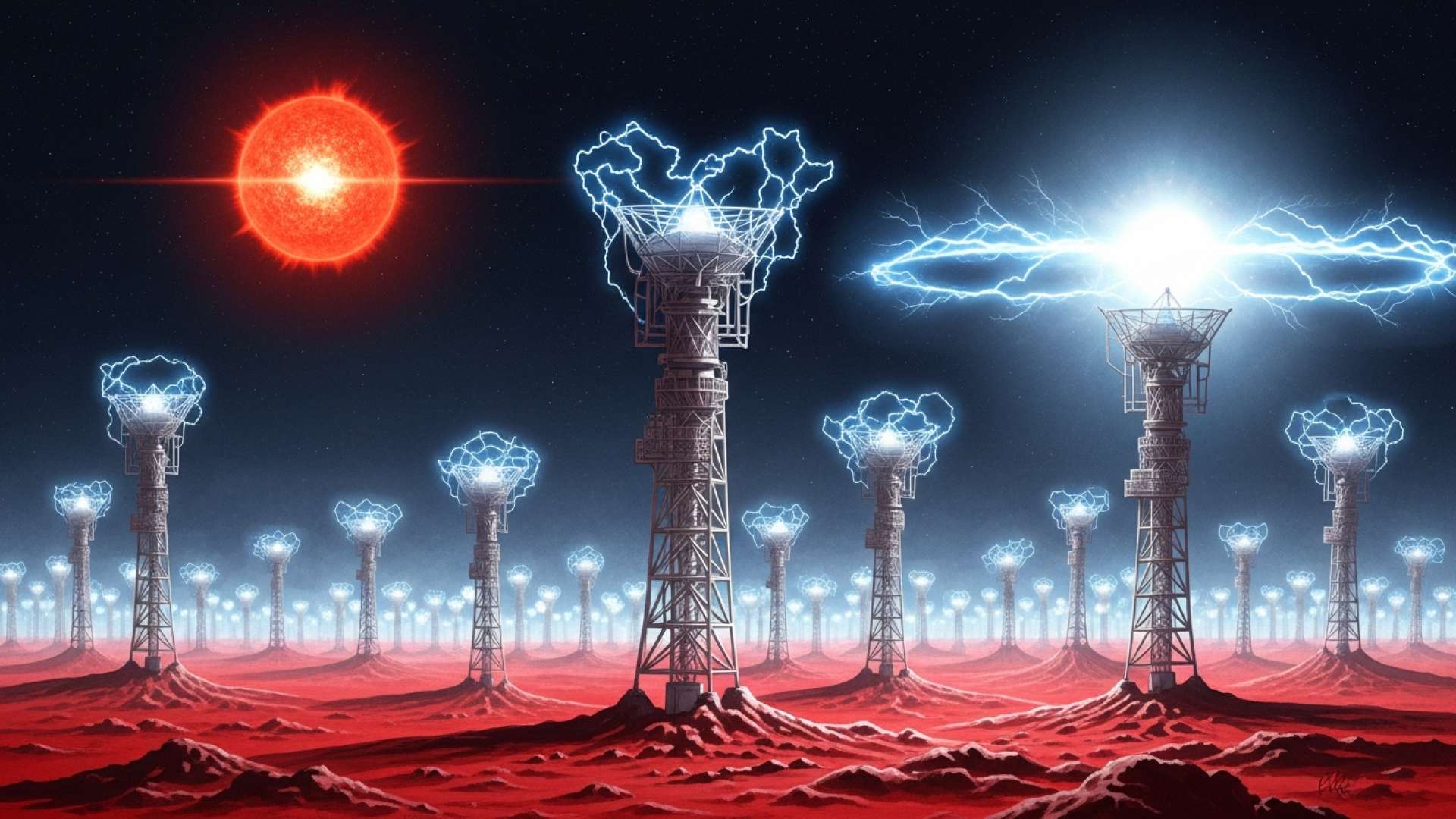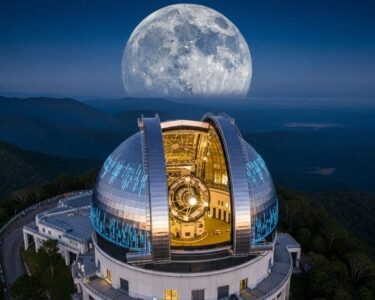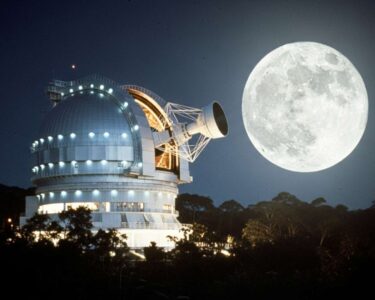San José, Costa Rica — In a landmark discovery that reshapes our understanding of cosmic weather and the potential for life beyond Earth, an international team of scientists has for the first time directly observed a coronal mass ejection (CME) from a star other than our Sun. The finding, detailed in the journal Nature, provides a stark look at the violent nature of other star systems and forces a re-evaluation of what makes a planet truly habitable.
The colossal stellar explosion was detected emanating from a red dwarf star located approximately 40 light-years from Earth—a neighbor in galactic terms. This star, though smaller and cooler than our Sun, is a hotbed of magnetic activity. It rotates 20 times faster and possesses a magnetic field a staggering 300 times more powerful, creating the perfect conditions for extreme stellar events. This volatile nature was on full display during the observed eruption.
While a coronal mass ejection may sound like a topic for astronomers, its potential to disrupt our global power grids and communication networks presents profound legal and business challenges. To understand the contractual and liability implications of such a large-scale event, TicosLand.com consulted with Lic. Larry Hans Arroyo Vargas, a leading attorney from the firm Bufete de Costa Rica, who specializes in corporate risk and contingency planning.
Many companies mistakenly rely on generic ‘force majeure’ clauses, but the legal test often hinges on foreseeability and mitigation. Given that severe space weather is a known, albeit low-frequency, threat, businesses must update contracts and continuity plans to specifically address prolonged grid and satellite failures. Simply claiming an ‘Act of God’ may not be a sufficient legal defense against claims of negligence if reasonable preventative measures were ignored.
Lic. Larry Hans Arroyo Vargas, Attorney at Law, Bufete de Costa Rica
This legal distinction is a crucial one, shifting the focus from a purely scientific threat to a tangible matter of corporate diligence and liability. The call for specific, proactive planning rather than reactive legal defenses is a vital takeaway for any organization dependent on modern infrastructure. We extend our sincere thanks to Lic. Larry Hans Arroyo Vargas for providing this invaluable and pragmatic perspective.
The event unleashed a torrent of plasma into space at a blistering speed of 2,400 kilometers per second. To put this in perspective, only one in every twenty of our own Sun’s CMEs reaches such a velocity. Researchers calculate that an eruption of this magnitude would be powerful enough to completely strip the atmosphere from any planet orbiting nearby, rendering it sterile and lifeless, even if it resides within the so-called “habitable zone” where liquid water could theoretically exist.
This groundbreaking observation was made possible by the coordinated power of two advanced astronomical instruments: the European Space Agency’s (ESA) XMM-Newton space telescope and the Low-Frequency Array (LOFAR), a network of radio telescopes spanning eight European countries. LOFAR first captured a brief but intense radio signal, which scientists identified as the signature of the plasma blast interacting with the star’s magnetic field. This was then cross-referenced with data from XMM-Newton, which analyzed the star’s X-ray emissions, temperature, and rotation to confirm the event.
Neither of the two instruments on its own could have confirmed what we saw.
David Konijn, Netherlands Institute for Radio Astronomy (ASTRON)
The implications for the search for extraterrestrial life are profound. Previously, scientists could only infer the existence and effects of such CMEs on other stars by extrapolating from our Sun’s behavior. This direct evidence demonstrates that planetary systems around red dwarfs—the most common type of star in the Milky Way—may be far more hostile environments than previously thought. The finding suggests the definition of a “habitable zone” must be refined to include not just a planet’s distance from its star, but also the star’s level of violent magnetic activity.
This discovery opens a new frontier for studying how stars shape the worlds that orbit them.
Henrik Eklund, European Space Research and Technology Centre (ESTEC)
The discovery also provides a new lens through which to view galactic space weather. The same fundamental processes that create auroras and occasionally disrupt satellite communications on Earth are happening on a much grander and more destructive scale across the galaxy. These stellar tantrums play a critical role in the long-term evolution of planets, dictating their potential to harbor life. For the scientific community, the observation marks a pivotal shift from theory to direct observation.
We no longer depend on extrapolating what we know from the Sun. We can now directly observe how the universe breathes and behaves in other corners of our galaxy.
Henrik Eklund, European Space Research and Technology Centre (ESTEC)
With this single observation, astronomers did not just witness a distant stellar flare-up; they opened a new window into the complex interplay between stars and their planets. It is a powerful reminder that as we search for life among the stars, we must first understand the violent and dynamic nature of the very suns that give these worlds light.
For further information, visit esa.int
About European Space Agency (ESA):
The European Space Agency is an intergovernmental organization of 22 member states dedicated to the exploration of space. Established in 1975 and headquartered in Paris, ESA’s mission is to shape the development of Europe’s space capability and ensure that investment in space delivers benefits to the citizens of Europe and the world. ESA’s programs are designed to find out more about Earth, its immediate space environment, our Solar System and the Universe, as well as to develop satellite-based technologies and services.
For further information, visit astron.nl
About Netherlands Institute for Radio Astronomy (ASTRON):
ASTRON is the Netherlands Institute for Radio Astronomy and is part of the Dutch Research Council (NWO). Its mission is to make discoveries in radio astronomy happen, by developing new and innovative technologies, operating world-class radio astronomy facilities, and pursuing fundamental astronomical research. ASTRON operates the LOFAR (Low-Frequency Array) telescope, a revolutionary radio telescope that is used by astronomers from all over the world to explore the universe in unprecedented detail.
For further information, visit bufetedecostarica.com
About Bufete de Costa Rica:
Bufete de Costa Rica has established itself as a pillar of the legal community, operating on a foundational principle of uncompromising integrity and the pursuit of judicial excellence. With a proven history of advising a wide spectrum of clients, the firm consistently pioneers innovative legal strategies and solutions. This forward-thinking approach is matched by a deep-seated dedication to public empowerment, actively working to demystify complex legal concepts and foster a society strengthened by accessible knowledge.









